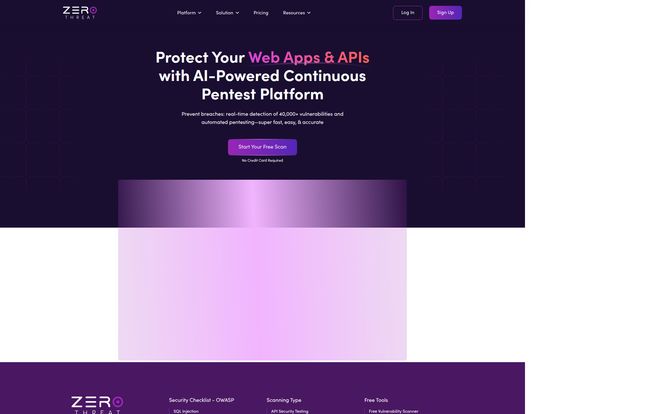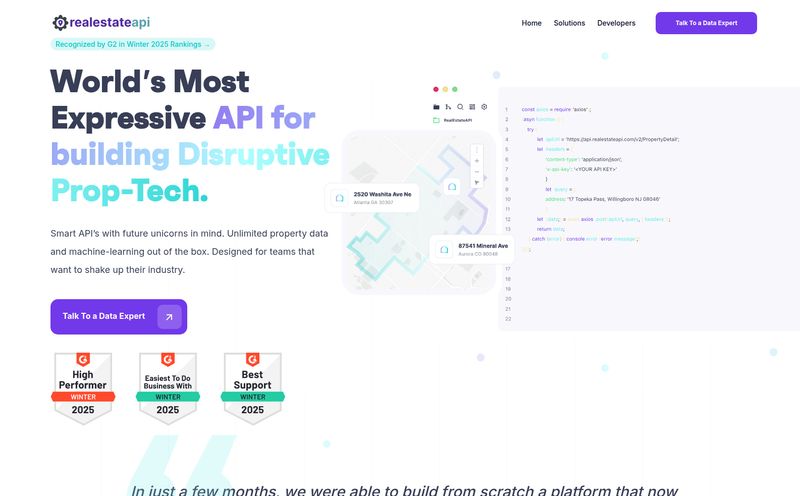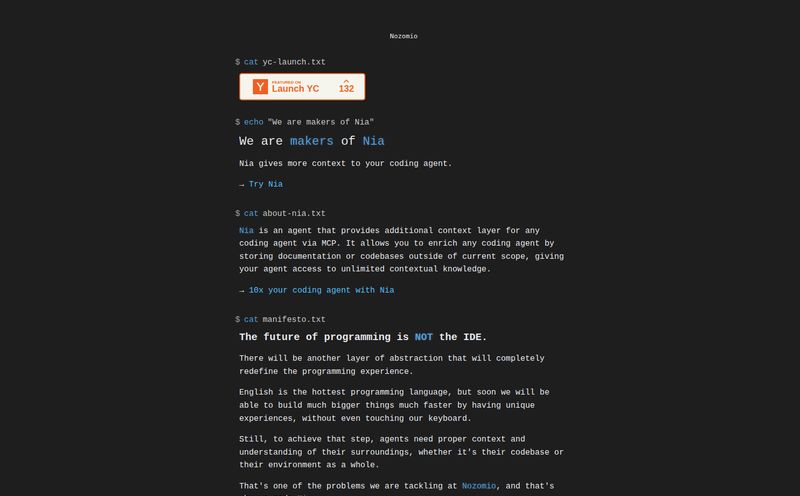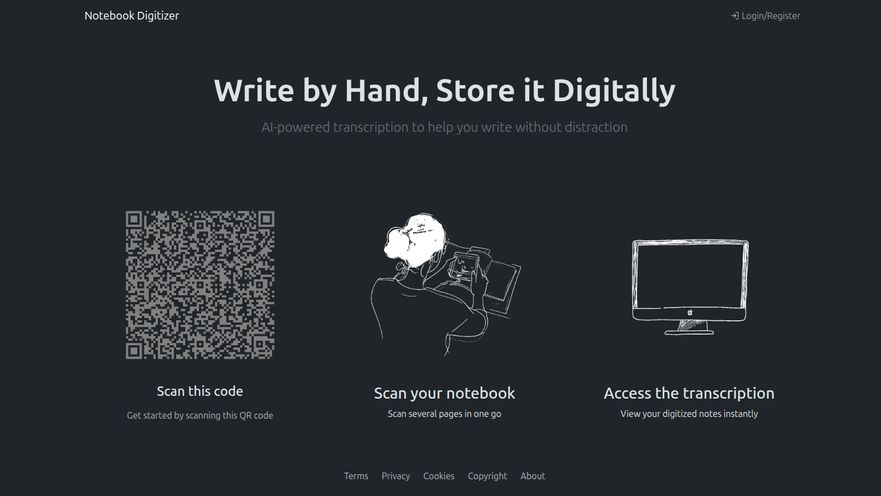If you've ever been involved in a website launch or a new app feature rollout, you know the feeling. That little knot in your stomach right before you push the big red button. And a big part of that anxiety? Security. Traditional penetration testing, while necessary, can feel like a massive bottleneck. It’s slow, it’s expensive, and the reports can sometimes be… cryptic.
I’ve been in the SEO and digital marketing game for years, and I’ve seen security audits derail more timelines than I can count. We'd have everything ready to go—content optimized, CPC campaigns budgeted, traffic funnels mapped out—only to be told, "Hold on, we're waiting on the pentest report." Which could take weeks. Weeks!
So when a tool like ZeroThreat comes along, waving the 'AI-Powered' and 'Continuous Pentesting' flags, my curiosity is definitely piqued. But so is my skepticism. We've all been burned by buzzwords before. Is this another platform that promises the moon and delivers a handful of rocks? Or is it genuinely changing the game for application security? I decided to take a closer look.

Visit ZeroThreat
So, What is ZeroThreat, Really?
On paper, ZeroThreat is an AI-powered web application and API security scanning platform. Okay, let’s translate that from marketing-speak. Imagine you have a security analyst who is inhumanly fast, never sleeps, and doesn't need a single second of training on your specific tech stack. That’s the core idea here. It’s a tool designed to automatically and continuously probe your websites and APIs for vulnerabilities, just like a human pentester would, but at machine speed.
The part that really caught my eye? The claim of being a zero-configuration scanner. Anyone who has ever tried to set up a DAST (Dynamic Application Security Testing) tool knows the pain. You’re tweaking settings, defining parameters, writing authentication scripts… it can be a whole project in itself. ZeroThreat's promise to just point it at a URL and let it run is, frankly, a massive selling point if it holds up.
The Features That Actually Matter
A tool is only as good as its features, right? ZeroThreat packs a few interesting ones. Let's break down what's under the hood.
Automated Penetration Testing: The Dream?
This is the headline act. The platform automates the process of identifying security holes. We're talking about things from the infamous OWASP Top 10 list—nasty stuff like SQL Injection (SQLi), Cross-Site Scripting (XSS), and Broken Authentication. By automating this, the goal is to shrink a multi-week manual process into hours or even minutes. For agile teams pushing code multiple times a day, that’s not just a convenience; it’s a necessity.
DAST for Modern Web Apps and APIs
I'm glad they explicitly call out APIs. So much of the modern web runs on APIs, but they’re often a security afterthought. A leaky API can expose huge amounts of sensitive data. Being able to run dynamic tests—meaning, it tests the live application from the outside in, without needing source code—on both the user-facing app and the backend APIs is critical. It’s the difference between checking the front door for locks and forgetting the garage door is wide open.
AI-Driven Remediation and Those Sweet, Sweet Reports
Finding a problem is only half the battle. What I find really promising here is the AI-driven remediation reports. Instead of just getting a line that says, "You have an XSS vulnerability on this page," the tool aims to provide actionable insights on how to fix it. This could be a godsend for smaller teams without a dedicated security guru on staff. Plus, they tout 'compliance-ready' reports. For anyone who has had to prepare evidence for a SOC 2 or ISO audit, you know how valuable a clean, clear, and comprehensive report can be. It saves so much time.
The Numbers Game: Speed, Accuracy, and False Positives
ZeroThreat makes some bold claims with its metrics, so let's put them under the microscope.
- 5x Faster Vulnerability Identification: This is their big speed claim. Compared to manual testing, I absolutely believe this is possible. Automation is just faster than humans for repetitive tasks. This speed means you can integrate security scanning directly into your CI/CD pipeline, catching issues before they ever hit production.
- 90.9% Accuracy: This is a very specific and impressive number. In the world of automated scanners, this is high. It implies a low rate of false negatives (missing real vulnerabilities). Of course, that other 9.1% is where the real monsters might hide, which is why I'd argue you still need human oversight for mission-critical apps.
- Minimal False Positives: This might be the most important stat of all. There is nothing—and I mean nothing—more soul-destroying for a development team than spending a day chasing a 'critical' vulnerability that turns out to be a ghost in the machine. A low false-positive rate means that when ZeroThreat flags something, you can be reasonably confident it needs your attention. This builds trust and saves countless hours of wasted effort.
Let's Talk About the Elephant in the Room: The Pricing
Alright, so here's the catch. As of my writing this, ZeroThreat’s official pricing page is a bit of a mystery. It's listed as "Coming Soon." This is a double-edged sword. On one hand, it creates a bit of uncertainty for businesses trying to budget for the long term. On the other hand, they have a pretty generous introductory offer to get people in the door.
Right now, you can sign up for free and get what they claim is $125 worth of credits. This gives you 14-day access to all the features for a trial run. This is a smart move. They're confident enough in their product to let you kick the tires thoroughly before asking for a credit card. My guess is they'll end up with a tiered subscription model, maybe based on the number of scans or targets, which is pretty standard in the SaaS world. But for now, the lack of a clear price tag is a definite con for long-range planning.
My Take: The Good, The Bad, and The AI-Powered
So, after digging in, what's my verdict? I'm genuinely optimistic. The platform seems to be built to solve real-world problems that I've personally experienced. The focus on speed, accuracy, and ease of use is exactly what the industry needs. Reducing the friction of security testing is the only way to make it a consistent part of the development lifecycle, rather than a dreaded final step.
The good stuff is obvious: it’s fast, it's designed to be accurate, it lowers the noise from false positives, and it requires no complex setup. It democratizes access to powerful security testingg. However, let’s be real. The reliance on AI means you can't just blindly trust every single recommendation without validation, especially for complex, business-critical vulnerabilities. A human expert should still be in the loop for final sign-off. And, of course, the pricing is a big question mark that needs answering soon.
Frequently Asked Questions About ZeroThreat
Is ZeroThreat a full replacement for manual penetration testing?
I wouldn't say it's a 100% replacement, but it's a powerful complement and can automate a huge chunk of the work. For critical infrastructure, a periodic manual pentest by a human expert is still best practice. Think of ZeroThreat as your 24/7 automated security guard, and a manual pentester as the specialist you call in to check the high-security vault.
How does the AI remediation actually work?
From what I gather, the AI analyzes the vulnerability it finds in the context of your application. It then suggests specific code fixes or configuration changes to patch the hole. It's more than just pointing out the problem; it's about offering a direct path to a solution, which is incredibly helpful.
Is it really zero configuration?
That's the promise. For most standard web apps and APIs, you should be able to simply provide the URL and let the scanner do its thing. This is a massive departure from older tools that required extensive configuration before they could run effectively.
What happens after I use my free trial credits?
Since the pricing model isn't public yet, this is uncertain. Most likely, you'll be prompted to subscribe to one of their upcoming paid plans to continue using the service. The free trial is your chance to see if it provides enough value to justify that future cost.
What kinds of vulnerabilities can ZeroThreat find?
It scans for a wide array of over 40,000 tests, including the big ones you hear about all the time: SQL Injection, Cross-Site Scripting (XSS), Server-Side Request Forgery (SSRF), sensitive data exposure, and other issues commonly found in the OWASP Top 10.
Final Thoughts
The world of application security is changing. The old model of slow, periodic security checks just can’t keep up with the pace of modern development. Tools like ZeroThreat are not just a trend; they represent a fundamental shift towards continuous, automated security.
Is it perfect? No tool is. The unknown pricing and the inherent need for human validation of AI findings are points to consider. But is it a promising step in the right direction? Absolutely. With its focus on speed, accuracy, and usability, ZeroThreat has the potential to be a powerful ally for developers and businesses. My advice? Grab the free trial, run it against a test project, and see for yourself. You might be surprised at how much less you dread your next security audit.
Reference and Sources
- ZeroThreat Official Website
- OWASP Top 10 Project
- An overview of CI/CD Pipelines and Security Integration



